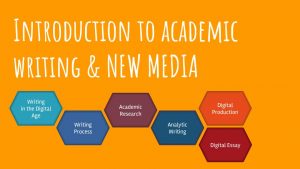Creating a content module (weeks 1-2) of our Canvas course, Introduction to Academic Writing and New Media, was a very enjoyable experience. I learned so much about how to design meaningful learning activities within Canvas, and I think these skills are highly transferable to different LMSs. I learned that LMSs are quite capable of becoming creative and engaging spaces for students; it all depends on the design and intentions of its creation.
Working with Faeyza has been an incredibly rewarding experience, and I am a stronger instructional designer for it. In fact, the most enjoyable aspect of creating this course has been my participation within learning communities, both online and face-to-face. I have engaged with my peers, professionals at my work, and even found an online learning consortium that houses pedagogical resources on structuring effective online courses. I have been fortunate to curate these types of resources and relationships, and I am motivated to deepen these ties after graduation!
Below, you will find my group member’s and my joint reflection on our digital story and developing the first module for the course.
